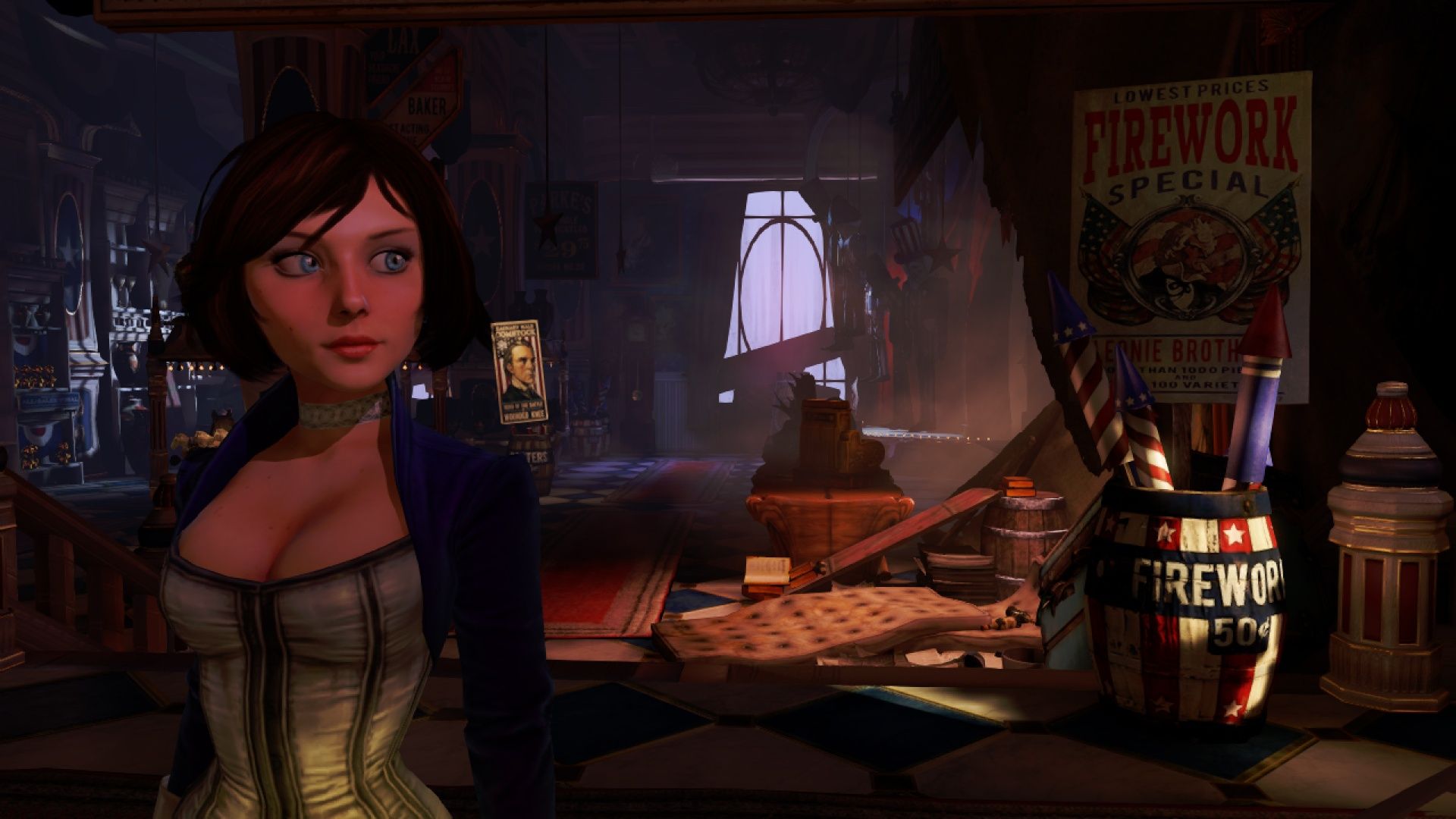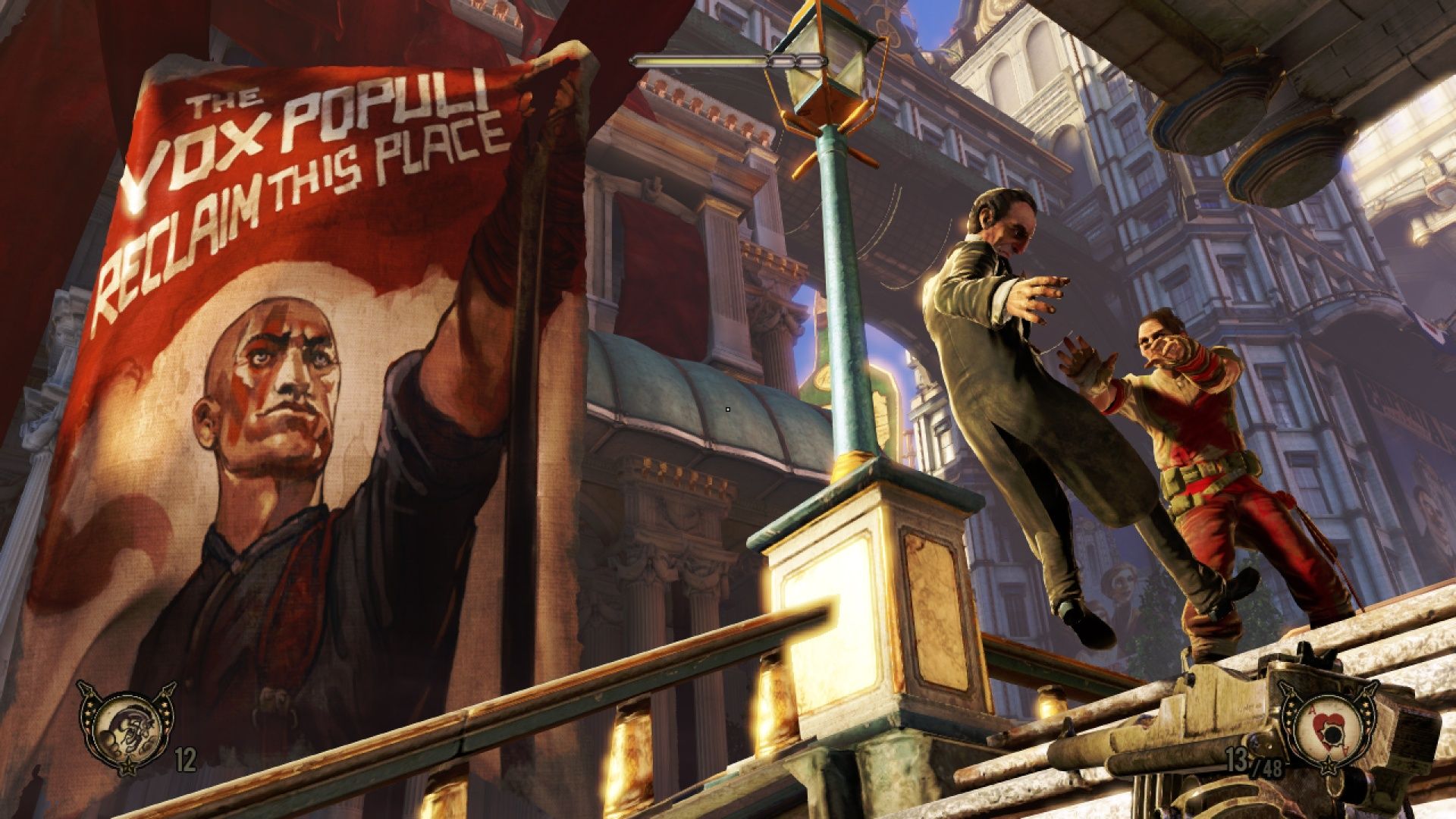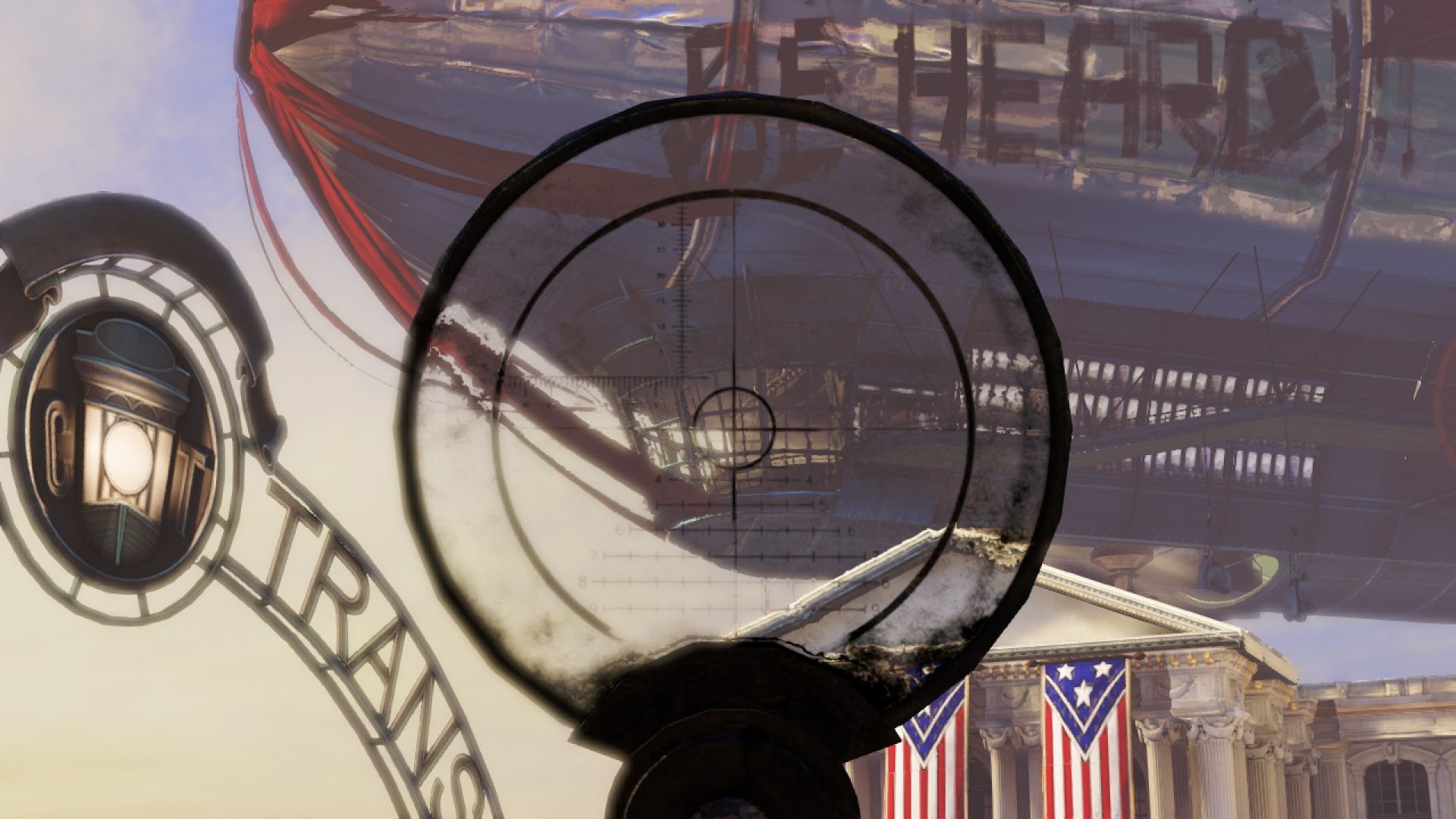BioShock: Infinite was one of those games that people really were iffy on when it was first announced. On one hand, it looked like a lazy cashgrab on the BioShock name alone, but on the other hand, the trailers and new settings looked so freaking gorgeous that it didn't really matter. As more and more footage was unveiled, most people definitely started sympathizing with the latter, and after the gameplay demo that was shown at E3, consider me completely sold on the game. 2012 can't come soon enough.
I could concentrate on the intriguing plot elements that were revealed about Infinite and the floating city of Columbia, but I'm sure it's all been said and done on other outlets. To give a basic outline, you're Booker DeWitt, an ex-Pinkerton agent tasked with rescuing Elizabeth from her imprisonment in Columbia. Along the way you'll encounter the warring "political" groups, the Vox Populi and the Founders, along with Elizabeth's 30-foot tall metal guard-owl Songbird.
The demo starts a third of the way into the game, and the plot elements that unfurl are all amazing and slightly mindblowing. However, what really wow'd me about the demo, and what immediately sold me on BioShock: Infinite was the sheer freedom of combat. One of the main selling points of the first BioShock was that you could kill and dismember your enemies in any number of ways, thanks to your numerous Plasmids and the many environmental hazards scattered throughout.
In Infinite, the freedom might even be greater, thanks to more space, more variety, and Elizabeth. In the demo DeWitt walks right in the middle of a firefight and ends up getting assaulted from all sides, including from above. At one point a blimp appears and lays down a barrage of rounds on DeWitt. The outside setting immediately opens up the world for greater possibilities to take down enemies, thanks to the new Skyline.
If the battle shown is indicative of the entire game, the Skyline will play a major part in the combat, as well as the transportation of the characters. In the demo, DeWitt takes down the blimp by using the Skyline system to zip all the way up to it and blowing up its fuel reserves. Additionally, he can jump from Skyline to Skyline to avoid enemies and land right on top of them.
It gets even crazier once you implement Elizabeth's powers to the mix. Elizabeth can not only display powers of telekinesis, but she has the ability to open up "Tears", holes in the space-time continuum to manifest objects seemingly from thin air. In the game this is displayed as objects phasing in and out of the environment as if they're covered by static. All one has to do is look at the item and press a button, and Elizabeth can make that object appear just like that.
How does that help in combat? Here's an example: right as DeWitt gets off a Skyline, he lands right in front of a group of rebels ready to shoot him. To take them down, he uses the Telekinesis Plasmid to lift all of them up in the air, while telling Elizabeth to phase in a Skyline train-car. The result? DeWitt lifts all the enemies right in front of the speeding train, killing all of them instantly.
With so many avenues of amazing death, the possibilities make my brain weep for joy. Immediately after seeing this demo for Infinite, my head was swimming with different ways to disable enemies.
I'd be a fool to think the narrative wouldn't be the main focus of the game; just from a few scenes in the demo, it was obvious that the relationship between Elizabeth and DeWitt would resonate profoundly by the end of the game. Still, it exhilarates me to know that the combat and gameplay hasn't been sacrificed for the story at all, and may have even been improved.
I've seen a lot of games at E3, and most of them were great, but none of them could stand a chance against the sheer amount of hype I've now garnered for BioShock: Infinite. Is it 2012 yet?



